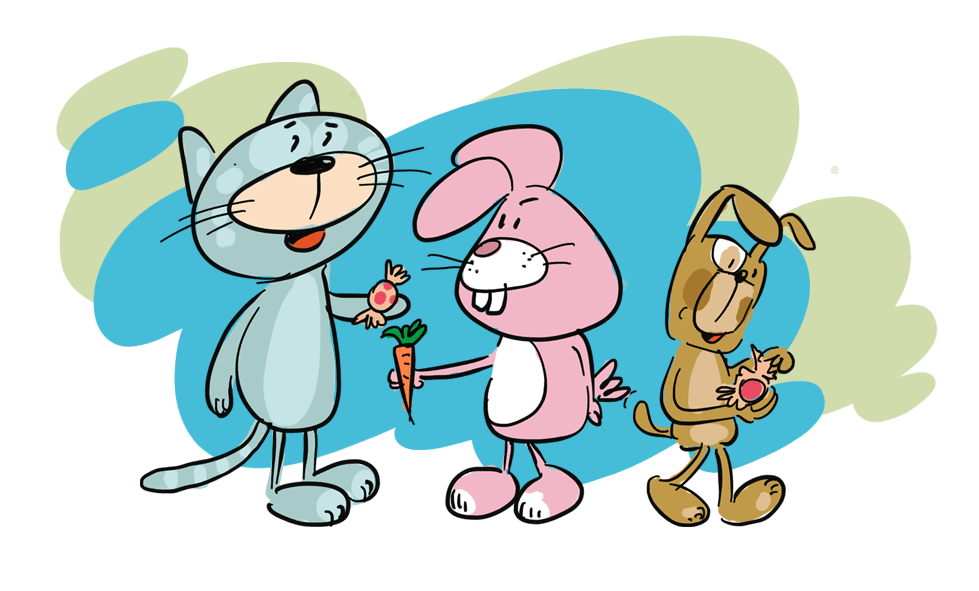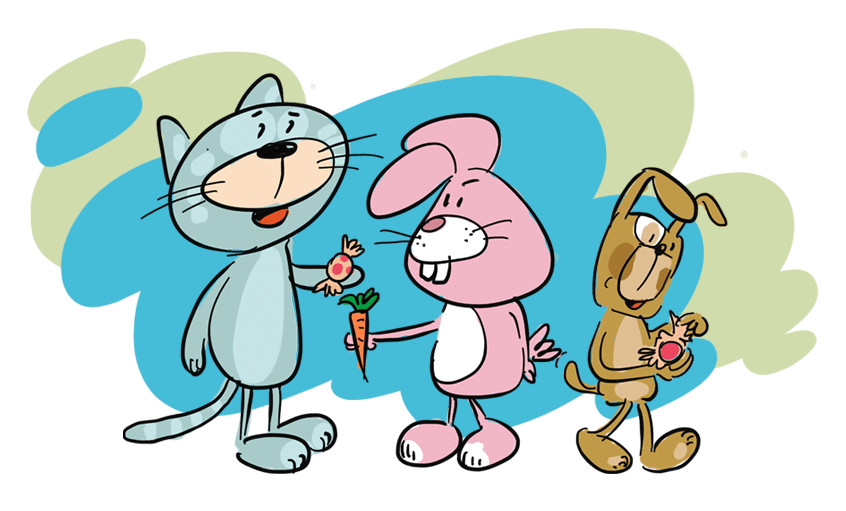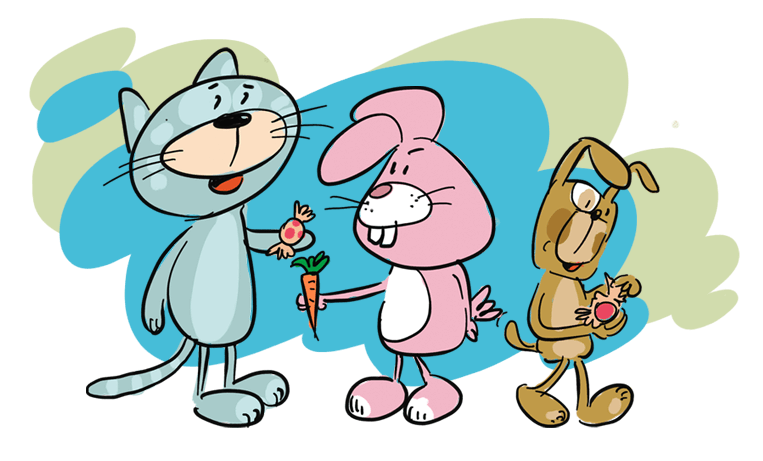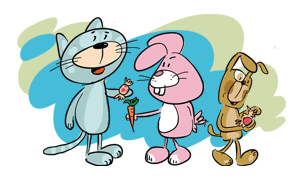What if there was no money
... i.e. barter
Goal: to acquire basic knowledge about the history of money and its different values




The value of money is one of key topics, which parents take up talking to their kids. The job is even harder if the child is not only unfamiliar with numbers, but does not quite understand what “less” or “more” means. However during the pre-school period we can easily attempt to explain numbers and sets, while in case of 6-7-year olds to teach them that.
The adventure on “What if there was no money” is best started with the video “Sebastian and first purchases”, available on the Bank Millennium Foundation.
After watching the video it is a good idea to talk to the kids about: what if there was no money? And actually - where did it come from?
In order to explain that you can use the dominolink opens in a new window prepared specifically for that purpose. Print it out and cut along the thick lines. Put the particular pieces of the domino on a table in front of the kid. The kid’s task will be to find the pieces, which will be mentioned in the story. Once it has all been arranged, the empty domino pieces can be used to draw the kid’s idea foe money in the future.
The next activity is a treasure hunt game. The kids get a list of items to findlink opens in a new window (we look for the same or similar i.e. cereals, tools, old Polish coin, old Polish banknote, modern coin, modern ATM card).
Parents, grandparents, neighbours or friends can be asked for them. Put each found item in a box and put a green mark next to the picture of the item.
Once all the treasures are in the box we can move on to other games:
- "Guess what it is" (cover the eyes, put a medium-thick glove on the guessing person’s hand, take out one item at a time - the task is to say its name).
- "Pantomime" (the person will randomly choose one item and will not show it to the participants; they will have to guess its name based on a pantomime, i.e. a scene acted by the person without using his/her voice).
- "Match the colour" (the person will take out one item and must quickly find another item of the same colour at home and put it next to it).
- "Syllables" (a game for older children: the person takes one item from the box, claps the colour of the item with syllables, then must find at home and bring an item, the name of which has just as many syllables).
The last proposal for children who can count up to 10 is the game “less, more, the same”. The parent’s task is to gather PLN 1 and PLN 2 coins (approx. 5 of each). Put them in a box or bag. Then each of the game players with eyes closed and a glove on the hands will randomly pick 3 coins. Then each will count the value of the three coins. The parent’s job is to draw attention to the fact that each person has the same number of coins but their value is different. This means that one person will buy an apple and a candy bar for them, and another person - just the candy bar. The kid - if it wants - may exchange one coin for another one and then count their value again. Finally the parent will take a PLN 5 coin and will ask the kid to take coins from the box, which will have the same value. And again it turns out that one five zloty coin has the value of e.g. three one zloty coins and a two zloty one.
Parts of this game may be used during shopping to show the child how much can be bought for a two zloty coin and how much for a five zloty one.
These are but a few proposals. For parents who like to read fairy tales or those whose kids wait for their fairy tale every night, we recommend a book published by Bank Millennium Foundation titled “Sebastian and first shopping”.
The story of MR. Seb
A long, long time ago there was no money. This was the time when Mr. Sebastian’s great, great grandfather - Mr. Seb, lived. Everyone in town knew him because he had a huge field where he grew cereals. In this town they made bread on one farm, another one had cows, which gave milk, yet another one had pigs, which were made into delicious sausages. And at the end of the street a blacksmith made tools of iron.
Toeards the end of summer many people would come to Mr. Seb. Because there was no money in those times, they would bring small pigs or tools, which they would trade for bags of grain. This was what barter was all about. Some inhabitants travelled to other places and would pay Mr. Seb with bags of salt. For a bag of salt you could also get many loaves of bread.
Sometimes however strange situations would happen. One day Mr. Seb wanted to buy some milk. He threw a bag of grain on his back and went to the milkman. However the milkman said he had enough wheat and did not need more. Mr. Seb had nothing else to trade so he returned home without the milk. Over time such situations would happen more often. The town dwellers started to think what to do about it.
Some time later in a far-away country called Greece today, someone came up with the idea that instead of exchanging things, they could pay for them with “coins”, i.e. circles of gold and silver. One for one such coin you could even buy 10 goats. Initially various characters were put on the circles, but finally digits appeared on them.
Mr. Sebastian’s father, wanting to buy milk, would go to the shop and pay with money i.e. coins or notes made of paper. Today Mr. Sebastian, who works in a shop, also sells good in exchange for money. However the money looks different today than what it looked like once. Besides, today you do not need to have real coins because you can pay with virtual money using a phone or ATM card. I wonder how Mr. Sebastian’s grandchildren will be paying. Maybe you have an idea. We can draw it now.